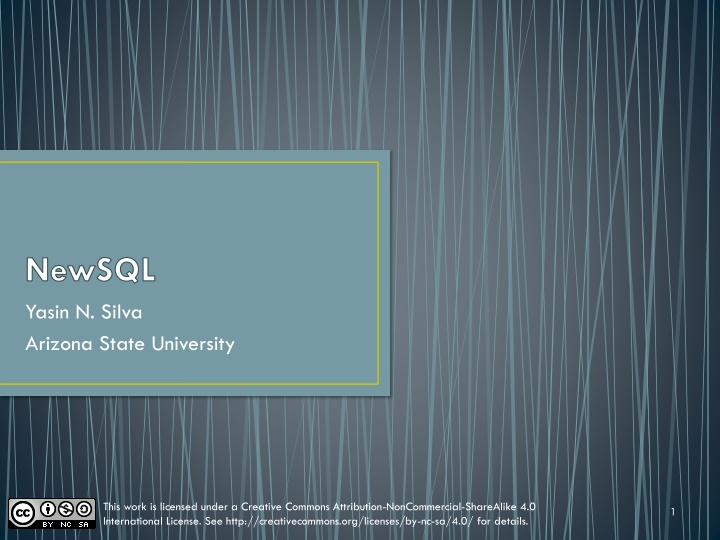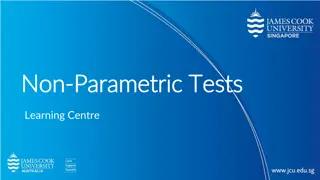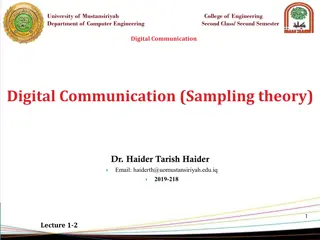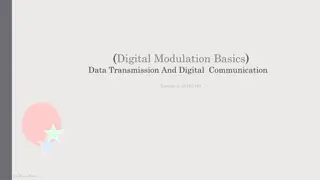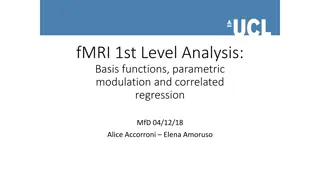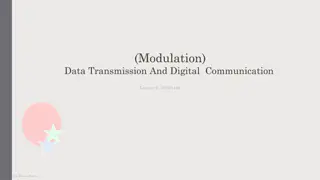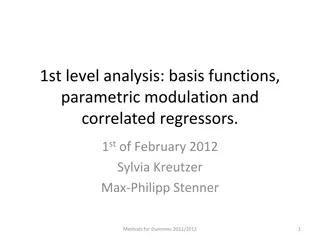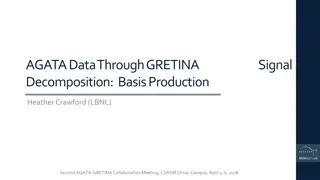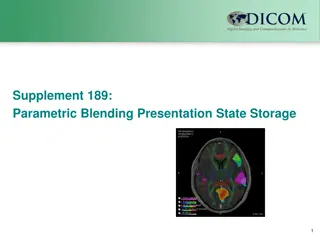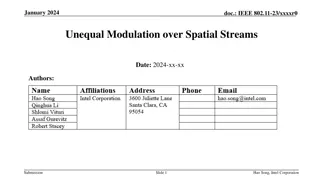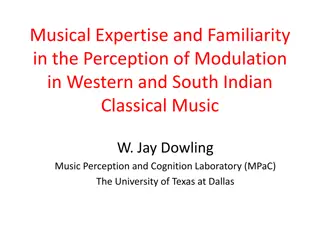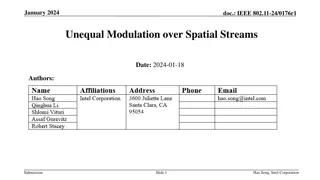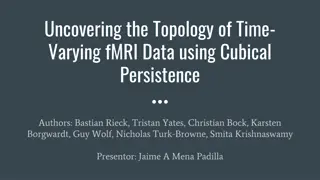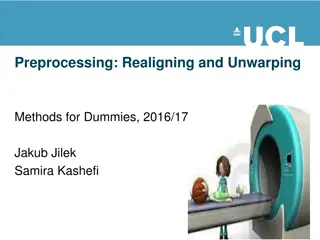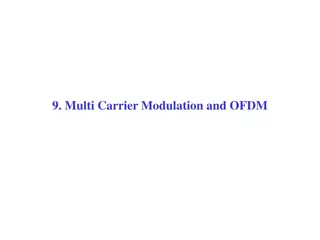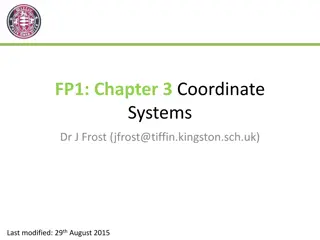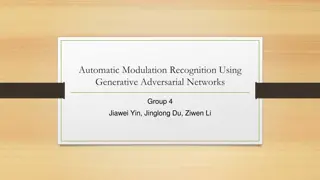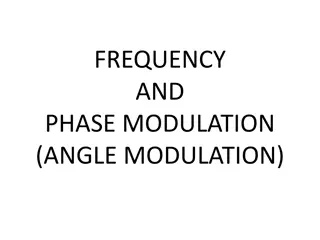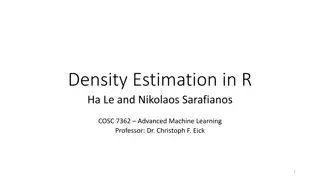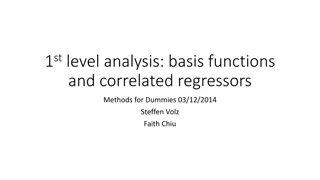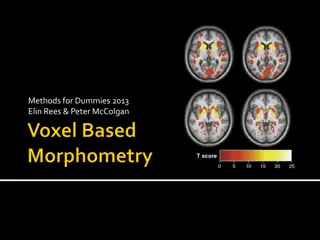fMRI 1st Level Analysis: Basis Functions & Parametric Modulation
In fMRI analysis, understanding temporal basis functions is crucial for describing complex signal changes over time. Different basis sets, such as gamma functions and finite impulse response sets, help approximate the signal and model the haemodynamic response function effectively. Parametric modulation, through factors like factorial polynomial expansion, enhances the experimental design by considering variable amplitudes in responses. Overall, these methods aid in creating informed basis sets for accurate analysis, as demonstrated by Kate Ledingham and Arabella Bird.
Download Presentation

Please find below an Image/Link to download the presentation.
The content on the website is provided AS IS for your information and personal use only. It may not be sold, licensed, or shared on other websites without obtaining consent from the author.If you encounter any issues during the download, it is possible that the publisher has removed the file from their server.
You are allowed to download the files provided on this website for personal or commercial use, subject to the condition that they are used lawfully. All files are the property of their respective owners.
The content on the website is provided AS IS for your information and personal use only. It may not be sold, licensed, or shared on other websites without obtaining consent from the author.
E N D
Presentation Transcript
NewSQL Yasin N. Silva Arizona State University This work is licensed under a Creative Commons Attribution-NonCommercial-ShareAlike 4.0 International License. See http://creativecommons.org/licenses/by-nc-sa/4.0/ for details. 1
The Big Picture http://blogs.the451group.com/opensource/2011/04/15/nosql-newsql-and-beyond-the-answer-to-sprained-relational-databases/ 2
NewSQL NewSQL is a class of database systems that aims to provide the same scalable performance of NoSQL systems while still maintaining the ACID guarantees of a traditional single-node database system. When should you use NewSQL? When the application needs to handle very large datasets or a very large number of transactions When ACID guarantees are required When the application can significantly benefit from the use of the relational model and SQL Related Article (Communications of the ACM) http://cacm.acm.org/blogs/blog-cacm/109710-new-sql-an-alternative-to-nosql-and-old-sql-for-new-oltp-apps/fulltext
NewSQL Database Features 1. Support the relational data model 2. Use SQL as the primary mechanism for application interaction 3. ACID support for transactions 4. A non-locking concurrency control mechanism so real-time reads will not conflict with writes, and thereby cause them to stall 5. A scale-out, shared-nothing architecture, capable of running on a large number of nodes without bottlenecking 6. An architecture providing much higher per-node performance than available from traditional databases 4 Modified from http://cacm.acm.org/blogs/blog-cacm/109710-new-sql-an-alternative-to-nosql-and-old-sql-for-new-oltp-apps/fulltext
NewSQL Systems New Architectures New database platforms designed to operate in a distributed cluster of shared-nothing nodes Examples: VoltDB, NuoDB, Clustrix, and VMware's SQLFire MySQL Engines Highly optimized storage engines for MySQL. Use the same programming interface as MySQL but scale better Examples: TokuDB, MemSQL, and Akiban Transparent Sharding These systems provide a sharding middleware layer to automatically split databases across multiple nodes Examples: dbShards, ScaleBase and ScaleDB 5 Modified from http://en.wikipedia.org/wiki/NewSQL
VoltDB https://voltdb.com 6
VoltDB In-memory database ACID-compliant RDBMS Uses a shared nothing architecture Written in Java and C++ Supported operating systems: Linux and Mac OS X Provides client libraries for Java, C++, C#, PHP, Python and Node.js 7
ACID in VoltDB Atomicity VoltDB defines a transaction as a stored procedure, which either succeeds or rolls back on failure Consistency VoltDB enforces schema and datatype constraints in all database queries Isolation VoltDB transactions are globally ordered and run to completion on all affected partitions without interleaving Durability VoltDB provides replication of partitions, and periodic database snapshots combined with command logging to ensure high availability and database durability 8 http://voltdb.com/dig-deeper/faq.php
VoltDB Video 9 http://vimeo.com/26680807
VoltDB VM 10
